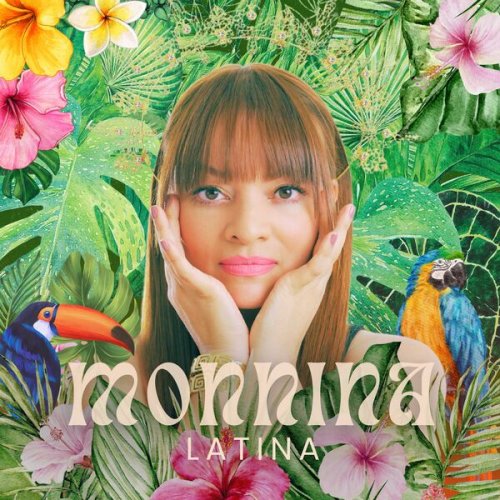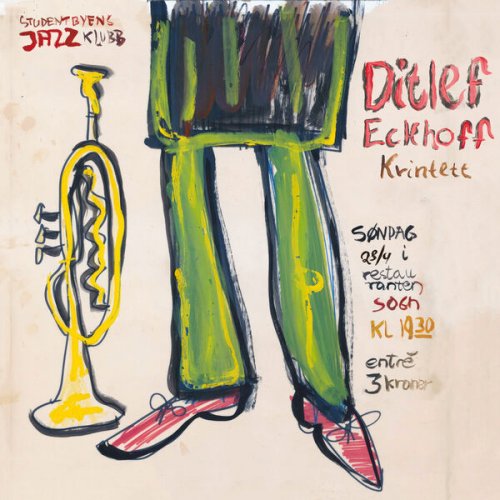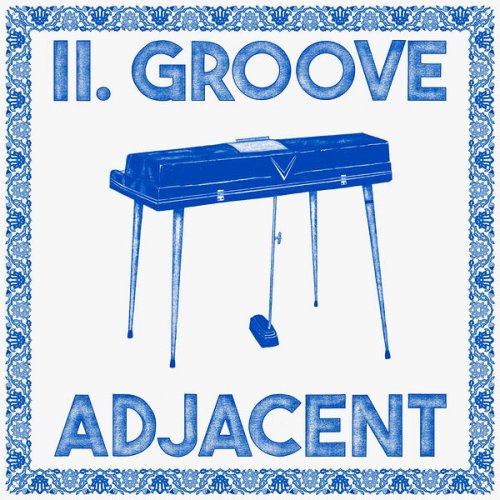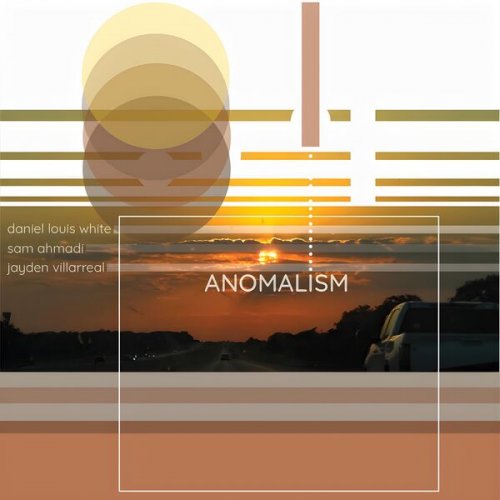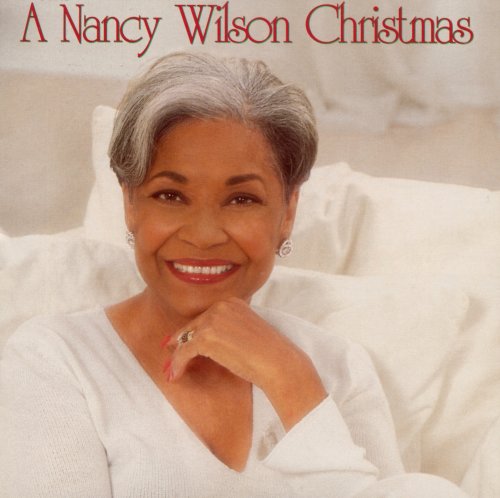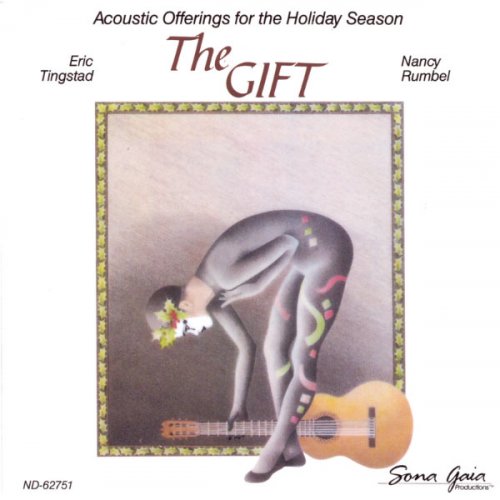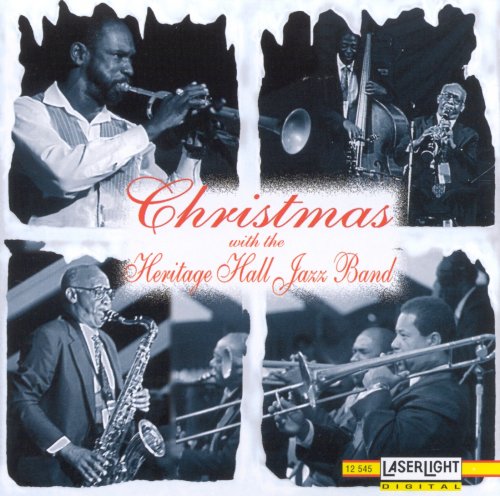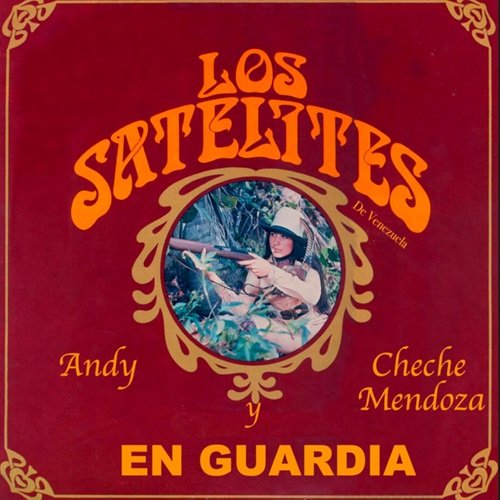La Sfera Armoniosa & Mike Fentross - Francesco Cavalli: La Rosinda (2011)
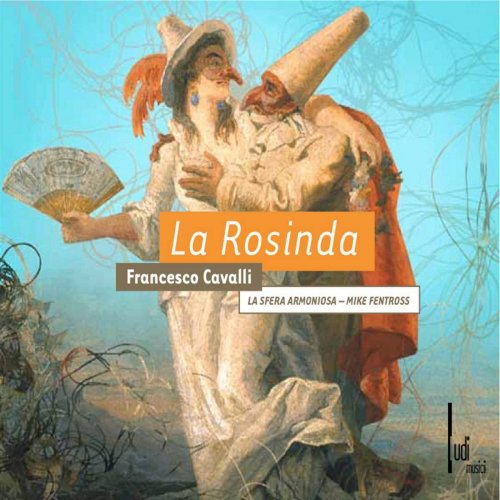
Artist: La Sfera Armoniosa, Mike Fentross
Title: Francesco Cavalli: La Rosinda
Year Of Release: 2011
Label: Ludi Musici
Genre: Classical
Quality: FLAC (image + .cue, log, artwork)
Total Time: 02:48:03
Total Size: 784 MB
WebSite: Album Preview
Tracklist:Title: Francesco Cavalli: La Rosinda
Year Of Release: 2011
Label: Ludi Musici
Genre: Classical
Quality: FLAC (image + .cue, log, artwork)
Total Time: 02:48:03
Total Size: 784 MB
WebSite: Album Preview
CD 1
Prologo: Sinfonia 3:54
01 Scene 1: De la magica tromba i fiati o saggie (Nerea, Chorus) 7:49
02 Scene 2: Auretta soave (Rosinda, Clitofonte) 3:29
03 Scene 2: Il serpentino abete (Rosinda, Clitofonte, Rudione) 9:17
04 Scene 3: Thisandro e qui sepolto? (Rudione) 3:07
05 Scene 4: Armi, quando vi miro (Thisandro, Rudione) 3:24
06 Scene 5: La fantasma spari (Rudione) 3:32
07 Scene 6: Amor ti cedo (Plutone, Proserpina) 7:24
08 Scene 7: Non col ramo di Cuma o con la scorta (Nerea, Plutone, Proserpina) 8:51
09 Scene 8: Qui, qui dove inonda (Nerea) 1:26
10 Scene 9: Hora che rapido (Chorus) 1:00
11 Scene 9: Ballo di Monteverdi 1:26
CD 2
01 Act II Scene 1: L'isoletta e diserta (Clitofonte, Rosinda) 2:56
02 Scene 2-3: Padrona, Clitofonte (Rudione, Clitofonte, Rosinda) 1:08
03 Scene 4: Se parte il mio respiro (Clitofonte) 4:35
04 Scene 5: Thisandro il corso arresta (Thisandro, Clitofonte) 2:03
05 Scene 6: Sospendete quell'ire, o Cavalieri (Vafrillo, Clitofonte, Thisandro) 3:38
06 Scene 7: Su queste solituduni sassose (Nerea, Cillena) 4:36
07 Scene 8: De l'incantato suolo (Cillena, Nerea) 4:47
08 Scene 9: Come rapida corre! (Cillena, Nerea) 1:48
09 Scene 10: Ecco li prigionieri (Vafrillo) - Che mi vuoi morta? (Nerea, Cillena, Thisandro) 6:55
10 Scene 11: Colei che di Corcira (Thisandro, Nerea, Cillena) 2:21
11 Scene 12: Povero Amor, ciascuno (Cillena) 2:04
12 Scene 13: Castigar lo voglio affe. (Aurilla) 2:39
13 Scene 14: Povere donne mie (Vafrillo, Aurilla) 9:26
14 Scene 15: Ohime non ho piu scampo (Rudione, Vafrillo) 1:28
15 Scene 16: Rallegrati mia gola (Rudione, Vafrillo, Chorus) 0:46
16 Scene 16: Partito Vafrillo, i Nani intrecciano un ballo 1:32
CD 3
01 Act III: Sinfonia 1:20
02 Scene 1: Onde partij ritorno. (Rosinda) 1:07
03 Scene 2: Rosinda l'incostante, ohime Rosinda. (Rosinda, Thisandro) - Non potea (Thisandro, Rosinda) 4:23
04 Scene 3: Non cadi Clitofonte? (Clitofonte, Rosinda, Thisandro) 2:41
05 Scene 4: Ove vai? Torna, senti (Clitofonte) 1:16
06 Scene 5: Dettami parole (Nerea, Clitofonte) 2:55
07 Scene 5: Vieni, vieni in questo seno (Nerea) 2:26
08 Scene 5: Lusinghevol Sirena (Clitofonte) - Scene 6: Cosi parti sprezzante? (Nerea, Cillena) 1:30
09 Scene 7: Penitente offensore (Meandro, Nerea, Cillena) 3:25
10 Scene 8: Gioira la Reina, io penero (Cillena) 4:25
11 Scene 9: Lodato il mio Vafrillo ho empito il ventre. (Rudione) 1:18
12 Scene 10: Del mio petto (Aurilla, Rudione) 3:03
13 Scene 11: Aurilla, Aurilla mia (Vafrillo, Aurilla, Rudione) 5:57
14 Scene 11: Bel sembiante (Aurilla, Rudione) - Strane cose mi narri. (Rosinda, Clitofonte) 4:46
15 Scene 13: Amanti, intempestivi (Meandro, Rosinda, Clitofonte) 2:15
16 Scene 14: Thisandro il core invoca (Rosinda, Clitofonte) 2:29
17 Scene 15: Ancor sei tu satollo (Nerea, Clitofonte, Cillena, Rosinda) 4:19
18 Finale: De la mia vaneggiante (Thisandro, Nerea, Rosinda, Clitofonte, Cillena, Rudione) 5:49
This is claimed as a premiere recording, made at the 2008 Vantaa Baroque Music Festival. Cavalli wrote more than 40 operas, of which fewer than 30 are extant; those few that have been performed and recorded since the revival of interest in Baroque opera demonstrate a consistent quality that begs further attention. So all other matters to one side, positive or negative, this La Rosinda is welcome for that. It helps draw attention to of one of the most important and attractive of Italian Baroque operatic composers, and provides further incentive to the performance of his music.
However, I have some concerns about it, starting with the performing edition. The information provided in this album’s liner notes is confusing. On the one hand, we’re told that after its Venetian premiere in 1651, La Rosinda was rewritten two years later for a different company in Naples. The impresario of that 1653 piece stated in its libretto that it was newly called Le magie amoroso , because “being no longer what it was, it therefore had to lose that name.” Among the important changes were an entirely new plot, and the addition of two major characters, Lindoro and Cilena—but this recording includes only Cilena. What became of Lindoro? Perhaps Cilena was not new, as the notes state, but a minor character elevated to a major part later. But that’s not what we’re told.
Then, there’s the orchestration. The Venetian production of La Rosinda at the Sant’Apollinare presumably used their standard pair of harpsichords, pair of violins, an archlute, and violone, while Le magie amorose in Naples might (or might not) have included the Real Cappella’s “wealth of string and wind instruments,” as the liner notes suggest. But this probably isn’t the Neapolitan opera, so the orchestration should reflect that of Venice—which it doesn’t. And on top of the string and wind instruments such as recorders, we get a regal, a dulcian, and an organ. It’s all heavily anachronistic, as is the frequency with which the instrumentation changes throughout this album, even repeatedly during solo scenes and arias without apparent reason.
So where does that leave us? I’m sensitive to the fact that modern audiences are not 17th-century ones, and that a new production of an old opera may go over better at least with some listeners if it is made more sonically colorful, but still … I found Claudio Cavina’s recent recording of Artemisia (Glossa 920918) exemplary in its very sparing and authentic instrumentation that yet supplied a wealth of variety, adding color to the voices without ever supplanting them. I can’t say that about this release.
The singing and conducting are another matter, though. So is the emoting—for this is one of the few productions of Baroque opera I’ve heard in which the singing doesn’t sound like vocalization, or at least a mix of sharply visualized people and warbling singers. Here every performer makes the most of interpreting the expressive points mirrored in the libretto and music, to excellent effect. There are many distinguished opera recordings of music from this period that never come within sighting distance of a stage, but this one does, and vividly.
That is true in particular of Emanuela Galli. I praised her soprano for its sultry richness in several albums—notably one of sacred music by Hasse, Porpora, and Galuppi (Carus 83.264), where I referred to her “fine trill, and a good ability to bow the voice for color.” As much and more is true here. Her “De la magica tromba” revels in dynamic shading, with vowels and consonants judged for their appropriate expressivity while remaining true to the singing line. By contrast, Francesca Lombardi Mazzulli’s voice is gray, with a bit of breath on the tone. Still, she demonstrates a fine technique, good agility, and once more, a very strong theatrical instinct, much as she did in Artemisia ¸ mentioned above. To complete the distaff side, Silvia Vajente possesses a bright lyric soprano, very sweet and well modulated, but unhappy in its upper range where the tone thins and shakes badly—as it does in the second and final section of act I, scene 6. Milena Storti’s fine soprano and great attention to character demonstrate that it’s possible to play a lighter part in one of these operas without resorting to the vocal equivalent of slapstick.
To the men. Makoto Sakurada has a disciplined, lustrous tenor voice, and handles figurations with ease. Fulvio Bettini certainly displays the part of a zanni , but I can’t help thinking there are ways to get across a cowardly, slovenly servant without huffing a great deal, or pushing hard on his voice so the tone spreads and runs wide repeatedly of pitch. I’ve seen Roberto Romagnino described as a male soprano rather than a countertenor, and the voice sounds more like a soprano, but the endless slow crescendos on a note, the drained vibrato, the deliberate off-pitch effects to seem funny, frankly aren’t. Nicola Ebau is really a Navarini-like basso profundo rather than a bass, and it shows in everything he does here: the power, depth, blackness, and rock-solid low notes of “Amor ti cedo.” He has trouble with the top notes, which fade away, much as you’d expect, but the tradeoff is worth it.
There’s some scrappiness evident in the playing of La Sfera Armoniosa, but they play with distinction and enthusiasm. Mike Fentross leads them, and his singers, with a sure hand, and plenty of attention to the dramatic variety of pace and mood that was so important to Venetian opera of the period.
Though advertised as live, I hear no audience sounds within the performance, so it was probably recorded live on stage, but to an empty house. Miking is very close for the singers, but not intolerably so.
The orchestration really bothers me here, and detracts from the excellence of this performance in most other respects. But in balance it doesn’t overwhelm the positives of this Rosinda for me, not with such dramatically realized, well-sung performances, and such a firm hand at the helm. Recommended, though I’d suggest listening if you can to excerpts before you decide to buy. -- FANFARE: Barry Brenesal
However, I have some concerns about it, starting with the performing edition. The information provided in this album’s liner notes is confusing. On the one hand, we’re told that after its Venetian premiere in 1651, La Rosinda was rewritten two years later for a different company in Naples. The impresario of that 1653 piece stated in its libretto that it was newly called Le magie amoroso , because “being no longer what it was, it therefore had to lose that name.” Among the important changes were an entirely new plot, and the addition of two major characters, Lindoro and Cilena—but this recording includes only Cilena. What became of Lindoro? Perhaps Cilena was not new, as the notes state, but a minor character elevated to a major part later. But that’s not what we’re told.
Then, there’s the orchestration. The Venetian production of La Rosinda at the Sant’Apollinare presumably used their standard pair of harpsichords, pair of violins, an archlute, and violone, while Le magie amorose in Naples might (or might not) have included the Real Cappella’s “wealth of string and wind instruments,” as the liner notes suggest. But this probably isn’t the Neapolitan opera, so the orchestration should reflect that of Venice—which it doesn’t. And on top of the string and wind instruments such as recorders, we get a regal, a dulcian, and an organ. It’s all heavily anachronistic, as is the frequency with which the instrumentation changes throughout this album, even repeatedly during solo scenes and arias without apparent reason.
So where does that leave us? I’m sensitive to the fact that modern audiences are not 17th-century ones, and that a new production of an old opera may go over better at least with some listeners if it is made more sonically colorful, but still … I found Claudio Cavina’s recent recording of Artemisia (Glossa 920918) exemplary in its very sparing and authentic instrumentation that yet supplied a wealth of variety, adding color to the voices without ever supplanting them. I can’t say that about this release.
The singing and conducting are another matter, though. So is the emoting—for this is one of the few productions of Baroque opera I’ve heard in which the singing doesn’t sound like vocalization, or at least a mix of sharply visualized people and warbling singers. Here every performer makes the most of interpreting the expressive points mirrored in the libretto and music, to excellent effect. There are many distinguished opera recordings of music from this period that never come within sighting distance of a stage, but this one does, and vividly.
That is true in particular of Emanuela Galli. I praised her soprano for its sultry richness in several albums—notably one of sacred music by Hasse, Porpora, and Galuppi (Carus 83.264), where I referred to her “fine trill, and a good ability to bow the voice for color.” As much and more is true here. Her “De la magica tromba” revels in dynamic shading, with vowels and consonants judged for their appropriate expressivity while remaining true to the singing line. By contrast, Francesca Lombardi Mazzulli’s voice is gray, with a bit of breath on the tone. Still, she demonstrates a fine technique, good agility, and once more, a very strong theatrical instinct, much as she did in Artemisia ¸ mentioned above. To complete the distaff side, Silvia Vajente possesses a bright lyric soprano, very sweet and well modulated, but unhappy in its upper range where the tone thins and shakes badly—as it does in the second and final section of act I, scene 6. Milena Storti’s fine soprano and great attention to character demonstrate that it’s possible to play a lighter part in one of these operas without resorting to the vocal equivalent of slapstick.
To the men. Makoto Sakurada has a disciplined, lustrous tenor voice, and handles figurations with ease. Fulvio Bettini certainly displays the part of a zanni , but I can’t help thinking there are ways to get across a cowardly, slovenly servant without huffing a great deal, or pushing hard on his voice so the tone spreads and runs wide repeatedly of pitch. I’ve seen Roberto Romagnino described as a male soprano rather than a countertenor, and the voice sounds more like a soprano, but the endless slow crescendos on a note, the drained vibrato, the deliberate off-pitch effects to seem funny, frankly aren’t. Nicola Ebau is really a Navarini-like basso profundo rather than a bass, and it shows in everything he does here: the power, depth, blackness, and rock-solid low notes of “Amor ti cedo.” He has trouble with the top notes, which fade away, much as you’d expect, but the tradeoff is worth it.
There’s some scrappiness evident in the playing of La Sfera Armoniosa, but they play with distinction and enthusiasm. Mike Fentross leads them, and his singers, with a sure hand, and plenty of attention to the dramatic variety of pace and mood that was so important to Venetian opera of the period.
Though advertised as live, I hear no audience sounds within the performance, so it was probably recorded live on stage, but to an empty house. Miking is very close for the singers, but not intolerably so.
The orchestration really bothers me here, and detracts from the excellence of this performance in most other respects. But in balance it doesn’t overwhelm the positives of this Rosinda for me, not with such dramatically realized, well-sung performances, and such a firm hand at the helm. Recommended, though I’d suggest listening if you can to excerpts before you decide to buy. -- FANFARE: Barry Brenesal
